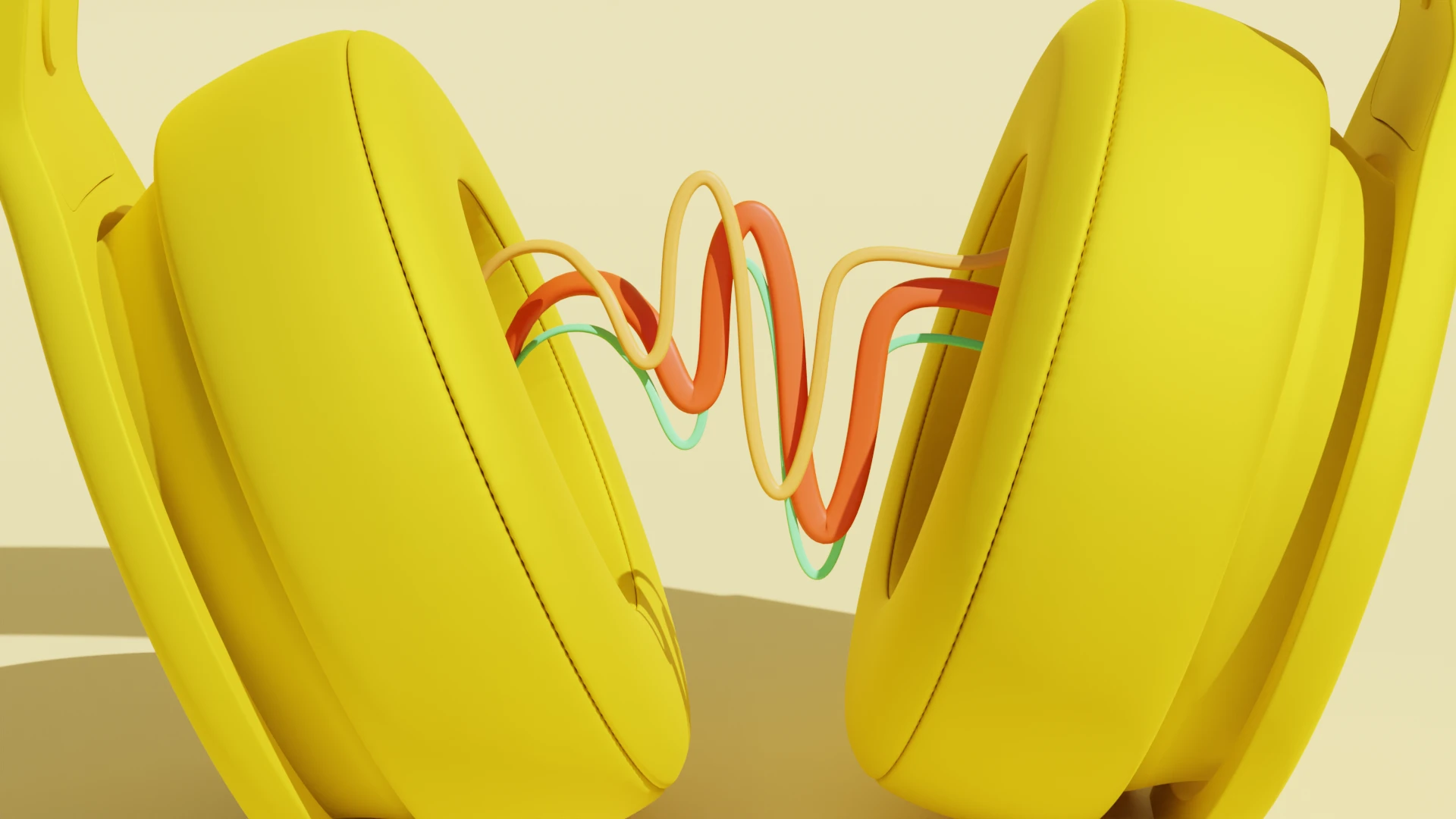What type of content do you primarily create?




Microphone shopping can feel like deciphering an alien language. Price tags swing wildly from $50 to $1,000, some mics plug straight into your computer while others demand an audio interface, and the terminology seems deliberately designed to confuse newcomers. Time to cut through the noise.
For all the complexity, most recording situations boil down to three microphone types: dynamic, condenser, and ribbon. Each has its sweet spot for musicians, podcasters, film crews, and creators of all stripes.
We'll zero in on dynamic and condenser microphones—the workhorses that most content creators actually use in home studios and real-world recording situations.
Dynamic vs condenser microphones: Key differences
Here's the TL;DR: Generally, dynamic microphones are more rugged and less sensitive to high sound pressure levels, so they're great for live performances and recording loud sources. Condenser microphones capture a broader frequency range with more detail, making them better for studio recordings and situations where audio quality is paramount. The right choice depends on your specific recording environment and what you're trying to capture.
Need more detail? We've got you.
What is a dynamic microphone?
A dynamic microphone uses electromagnetic induction to generate an electrical signal. When sound waves hit the microphone, they move a lightweight diaphragm that's attached to a coil of wire suspended within a magnetic field. As this metal coil moves within the magnetic field, it creates an electrical current proportional to the sound waves, which transmits the audio signal through your cable to your recording device or amplifier.

Audio engineers use dynamic mics for recording nearly any type of sound. Los Angeles-based producer, composer, and audio engineer Dave McKeever has used this type of microphone to record vocals, instruments, and ambient sounds. He shares some pros and cons of dynamic mics.
Pros of a dynamic microphone
- Durable design can withstand rough handling
- Requires no external power or batteries
- Handles high sound pressure levels effectively
- Generally more affordable than condenser mics
“Dynamic microphones are extremely durable,” Dave says. “They aren't terribly sensitive to things like humidity, heat, and electric shock. A dynamic mic captures less detail than a condenser, which can be a good thing because that makes them more forgiving in noisy situations. They're also simple to set up and require minimal work to optimize.”
Cons of a dynamic microphone
- Limited frequency response compared to condensers
- Less sensitive to subtle sound nuances
- Heavier build, less convenient for travel
“The flipside to dynamic microphones being less sensitive is that most models don't capture the same level of detail as a condenser microphone or a ribbon microphone,” Dave says. “For live performance, this isn't much of an issue. But for studio recordings, which often benefit from the rumble of lower frequencies or the breathy air of higher frequencies, you can lose something with many dynamic mics.”
What is a condenser microphone?
A condenser microphone (sometimes called a capacitor microphone) creates audio signals using a capacitor — a device made up of two metal-covered plates (the backplate and the diaphragm) suspended close together with a voltage passing between them. Unlike dynamic microphones, condensers require external power to operate because of this electrical design.

When vibrations from a voice or an instrument hit the diaphragm, it produces a change in voltage, and that voltage variation transmits audio signals. But for that signal to be heard, it must be amplified by a power source. That power source is usually phantom power (typically 48V), which comes directly through the XLR cable from your audio interface or mixer. Condenser microphones are popular among recording studio engineers for their remarkable ability to capture detail and nuance in vocals and acoustic instruments.
Pros of a condenser microphone
- Superior sensitivity for detailed sound capture
- Wide frequency response enhances audio fidelity
- Clearer recordings
- Excels in studio settings
Dave says there's a lot of upside to condenser microphones. "Compared to a dynamic mic, a good condenser mic will have a wider frequency response," he explains. "This is why condenser mics are often preferred for capturing vocals, acoustic guitars, and other instruments where you want to hear all the subtle details and harmonics."
“This means they'll capture everything from very high frequencies to very low frequencies — pretty much everything the human ear can process.” You can expect a ton of detail in a condenser microphone recording, provided that the mic is properly set up and that you choose an appropriate model.
Cons of a condenser microphone
- Requires phantom power or external power supply
- Less durable than dynamic mics
- Susceptible to moisture and temperature changes
- Typically more expensive than dynamic microphones
“There's no hiding any sound from a condenser mic,” Dave says. “It'll pick up every sound in the room, whether you like that sound or not. They can also be harder to set up than dynamic microphones.
"For one thing, they require an external current of energy called phantom power. You can get phantom power from your audio interface, but it's one extra thing to plan for. Finally, you may find that your condenser mic can't handle the same sound pressure levels (SPL) as a dynamic mic before it starts distorting. For incredibly loud sounds like drum kits, guitar amps, or brass instruments, you'll definitely want to use a dynamic mic."
Finally, Dave says condenser mics aren't exactly "plug and play" the way that dynamic mics are. "No matter what," he advises, "plan to spend a lot of time positioning condenser microphones and adjusting input levels in order to get the best sound. They're more sensitive to room acoustics and placement, so take the time to experiment with different positions relative to your sound source."
Choosing a microphone for gaming or streaming
If you’re streaming your top kills or broadcasting your weekly show, you’ll want a microphone that offers clarity and minimal background noise. A dynamic mic like the Shure SM7B is a favorite for streaming in untreated rooms due to its robust off-axis rejection according to Shure. On the other hand, a condenser mic such as the Shure PGA27 can deliver crisp vocal detail, but it might pick up extra ambient sounds especially in less controlled environments. Your choice also depends on how well your space is set up—nobody wants the AC hum overshadowing your epic highlight reel. Ultimately, test a few models that fit your voice and budget so you can confidently hit that “Go Live” button without worrying about mic issues.
Large vs small-diaphragm microphones compared
A microphone's diaphragm is a thin membrane that can conduct electricity. It sits next to a metal plate within the microphone housing. The sound of a large-diaphragm microphone will differ from that of a small-diaphragm mic—generally, the larger the diaphragm, the more detailed the sound, particularly in the low and mid frequencies, and heftier the microphone. Diaphragm size is one of the most important factors affecting a microphone's sound character.
Large-diaphragm mics, particularly large-diaphragm condensers, are some of the most detailed microphones on the market. They're a standby for recording vocals, but you'll also see large-diaphragm mics in front of guitar amps, acoustic instruments, and even drum kits. They can come in somewhat unwieldy shapes, and a large-diaphragm condenser requires external phantom power — which means you have to include a power source like a laptop computer, connected via a digital audio interface — but the sound of a good large-diaphragm mic is second to none.
True to their name, small-diaphragm microphones are smaller than large-diaphragm mics, and this makes them more portable. In most applications, recording engineers use small-diaphragm mics to record instruments. Because of their compact size, small-diaphragm mics can clip to a drum set and record individual pieces of the kit. They can also work for recording vocals, but for that, most engineers opt for large-diaphragm mics instead.
Maintenance tips for dynamic and condenser microphones
No matter which microphone you use, a few simple habits can stretch its lifespan. For condensers, storing them with a desiccant helps ward off moisture damage according to Sweetwater. You can also protect the delicate diaphragm by using pop filters and shock mounts when capturing vocals or podcasts. Dynamic mics benefit from regular grille wipe-downs to prevent debris buildup and potential magnet misalignment. If you accidentally drop one, it might survive better than a condenser, but it’s still best to avoid letting it bounce around in your backpack. Let your microphone rest in a secure case after each session, and you’ll rarely stress about last-minute gear malfunctions.
Microphone polar patterns explained
A microphone's polar pattern, also known as its pickup pattern, describes the direction from which it records its sound sources. Dynamic and condenser mics come with a wide variety of polar patterns, each suited to different recording situations. The pattern determines how sensitive the microphone is to sounds coming from different directions. Here are the four main patterns:
- Cardioid: This polar pattern is named for its heart shape—imagine that the heart's indentation is right behind the mic. This pattern gives it high sensitivity to sound in front of the mic, slightly reduced sensitivity from the sides, and almost no sensitivity from behind. This is the best polar pattern for picking up a single speaker. There are two variations of the cardioid polar pattern: super cardioid, which is like cardioid but with more sensitivity behind the microphone; and hyper cardioid, which covers more sound sources behind the mic.
- Omnidirectional: This polar pattern captures sound from all directions, which makes it more ideal for recording environmental sounds than for recording on a single speaker.
- Bi-directional: This polar pattern captures the same amount of sound in front of and behind the mic, making it good for a two-way conversation.
- Shotgun: This polar pattern captures a narrow band of sound in front of and behind the microphone. It's mostly used in video production.
5 best dynamic and condenser microphones compared
| Mic | Type | Best for |
|---|---|---|
| Shure SM7B | Dynamic | Podcasting and broadcasting |
| Rode NT1-A | Condenser | Studio recording and podcasting |
| Sennheiser MD 421 II | Dynamic | Recording both vocals and instruments |
| Neumann U87 | Condenser | Professionals with big budgets |
| Rode PodMic | Dynamic | Live streaming |
1. Shure SM7B
Ideal for podcasting and broadcasting
- Price: Around $400
- Type: Dynamic
- Polar pattern: Cardioid
- Frequency response: 50 Hz to 20 kHz
The SM7B is the go-to model for radio stations that have a lot of DJs cycling in and out. It's a large-diaphragm dynamic microphone, and it's forgiving for all types of voices.
Dave notes that the SM7B “sounds as good as most condensers but it doesn't require the same tweaking and adjusting you can expect when setting up a condenser.”
While the SM7B doesn't require phantom power, it does have a high impedance that can only be overcome by a very strong preamp. Make sure your audio interface or amplifier has one, or else invest in an external preamp like a Cloudlifter or FetHead. Note that the SM7B is a large mic, so it's impractical for most field recordings. It doesn't come with a built-in stand and is usually mounted on a boom arm or a microphone stand.
2. RØDE NT1-A
Well-suited for studio recording and podcasting
- Price: Around $230
- Type: Large-diaphragm condenser
- Polar pattern: Cardioid
- Frequency response: 20 Hz to 20 kHz
A standout choice for vocalists and podcasters seeking studio-quality recordings, the RØDE NT1-A captures rich audio with clarity and low self-noise. This large-diaphragm condenser mic is perfect for recording nuanced vocal performances and spoken word, giving it a professional-sounding richness. Its cardioid polar pattern helps reject background noise, making it ideal for home studio environments.
3. Sennheiser MD 421 II
Versatile for recording both vocals and instruments
- Price: $429
- Type: Dynamic
- Polar pattern: Cardioid
- Frequency response: 30 - 17,000 Hz
The Sennheiser MD 421 II captures crisp, detailed vocals and a wide array of instruments, making it a favorite of studio pros and home recording enthusiasts alike. It's got a tailored frequency response and durable design, so you'll be able to capture everything from acoustic guitar dynamics to kick drum resonant depths, and get great audio quality no matter what you're recording. Its five-position bass roll-off switch lets you customize the low-end response for different sound sources.
4. Neumann U87
Best for industry professionals with a big budget
- Price: $3,695
- Type: Large-diaphragm condenser
- Polar pattern: Cardioid, along with omnidirectional and figure-8 (bi-directional) patterns
- Frequency response: 20 Hz to 20 kHz
For pros looking for the pinnacle of audio fidelity, Neumann's U87 handmade microphone is it. Neumann is an industry name known for unparalleled quality. Its versatility in capturing vocals and instruments with pristine clarity justifies its premium status. With switchable polar patterns (cardioid, omnidirectional, and figure-8), it adapts to virtually any recording scenario, making it the gold standard in professional studios worldwide.
5. Rode PodMic
Ideal for live streaming and recording good vocals
- Price: Around $100
- Type: Dynamic broadcast
- Polar pattern: Tight cardioid
- Frequency response: 20Hz - 20kHz
The Rode PodMic is one of the best microphones for under $100. This dynamic microphone is ideal for podcasters, streamers, and vocalists looking for a microphone that delivers high quality sound while maintaining crisp vocal presence in live or studio settings thanks to its optimized frequency response and internal pop filter. Its integrated shock mounting helps reduce handling noise and vibrations from desk stands or boom arms.
🧠 Learn: Best tips to improve the audio quality of a recording
How to choose between dynamic vs condenser microphones
Choosing the right microphone depends on a few things: environment, sound source, and budget.
Consider the recording environment
Let's look at a few scenarios:
- Home studio vs. professional studio: If you're setting up a home studio, the environment might not be perfectly soundproofed, which means you'll need a dynamic microphone that can handle ambient noise better. In a professional studio, you can opt for a more sensitive microphone like a condenser mic.
- Indoors vs. outdoors: Outdoor recording demands a dynamic microphone with robust wind and handling background noise reduction. For indoors, especially in controlled environments, a condenser mic is better.
- Live performance vs. recording: Live microphones are built to be durable and less sensitive to noise, whereas studio microphones are optimized for sound quality over ruggedness.
🧠 Learn: Top 10 microphones for iPhone on the market
Evaluate the sound source
The best microphones for vocals are large-diaphragm condensers, while for instruments it depends on the type: dynamic mics for loud sources like drums, guitar amps, and brass instruments, and small-diaphragm condensers for acoustic guitars, pianos, and string instruments. For podcasting and broadcasting, dynamic mics like the SM7B or Rode PodMic offer the best balance of sound quality and background noise rejection.
Consider budget and durability
If you're on a tight budget, brands like Audio-Technica and RØDE are great choices. But if you've got money to spend, Neumann or AKG are excellent options.
Choose a mic with a good build quality if you're going to use it frequently in live settings or transport it a lot. Brands like Shure and Sennheiser are known for being durable.
At the end of the day, it doesn't matter what music production or podcast equipment you use. Once you capture sound, you have to edit it. With audio editing software like Descript, you can cut, rearrange, repair, and add effects to your audio via an intuitive text-based interface.
Thousands of popular podcasts like Planet Money and Freakonomics Radio use Descript to perfect their podcasts. Want to join them? See how Descript can supercharge your audio editing.
FAQs
Which microphone type lasts longer?
Dynamic microphones generally last longer because they don't rely on fragile electronics, making them more resistant to drops and rough handling according to Shure.
Do condensers work without phantom power?
No. Condenser microphones require an external power source to polarize their diaphragms and amplify the signal according to Sweetwater.
Any setup tips for a condenser mic?
Position it with a shock mount or pop filter to minimize unwanted vibrations and plosive sounds as recommended by Shure. Then dial in your gain and keep an eye on nearby noise sources, since condensers are more sensitive than dynamics.




























%201.svg)





















